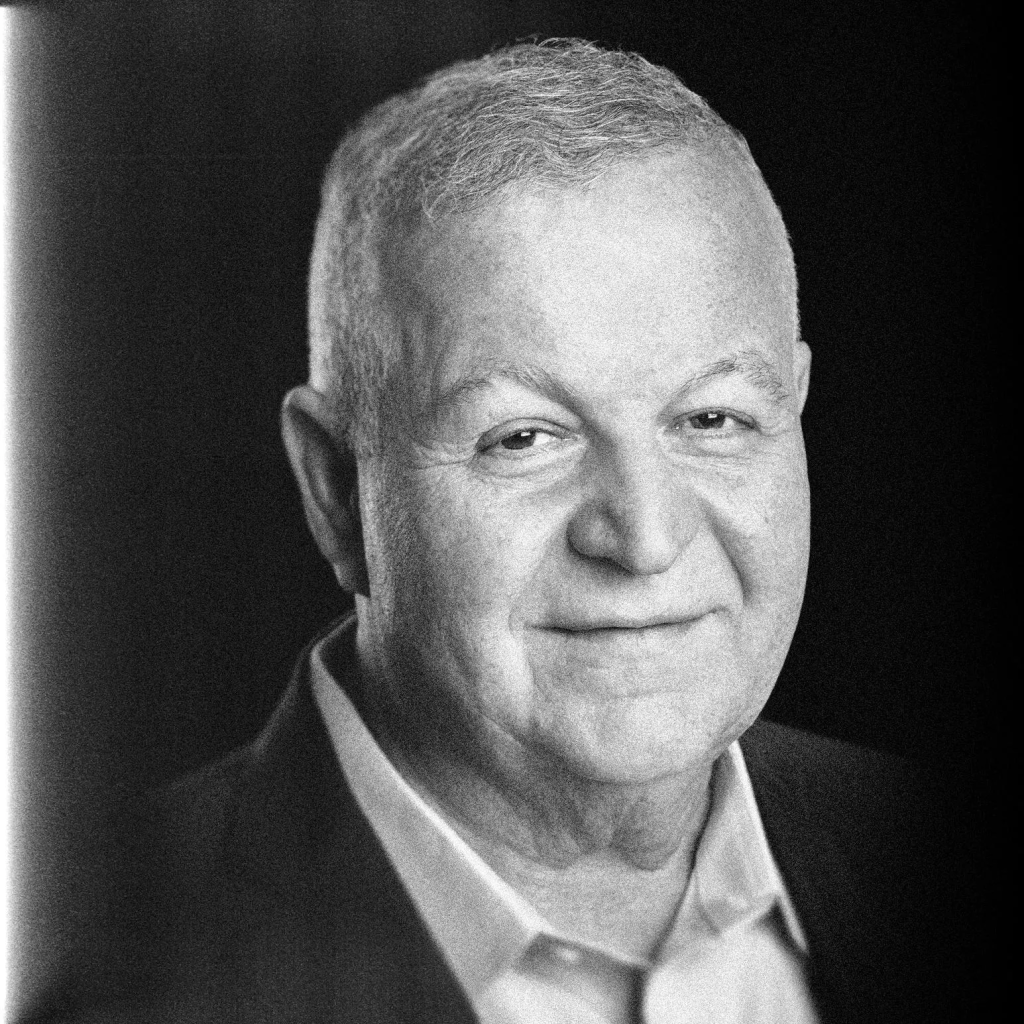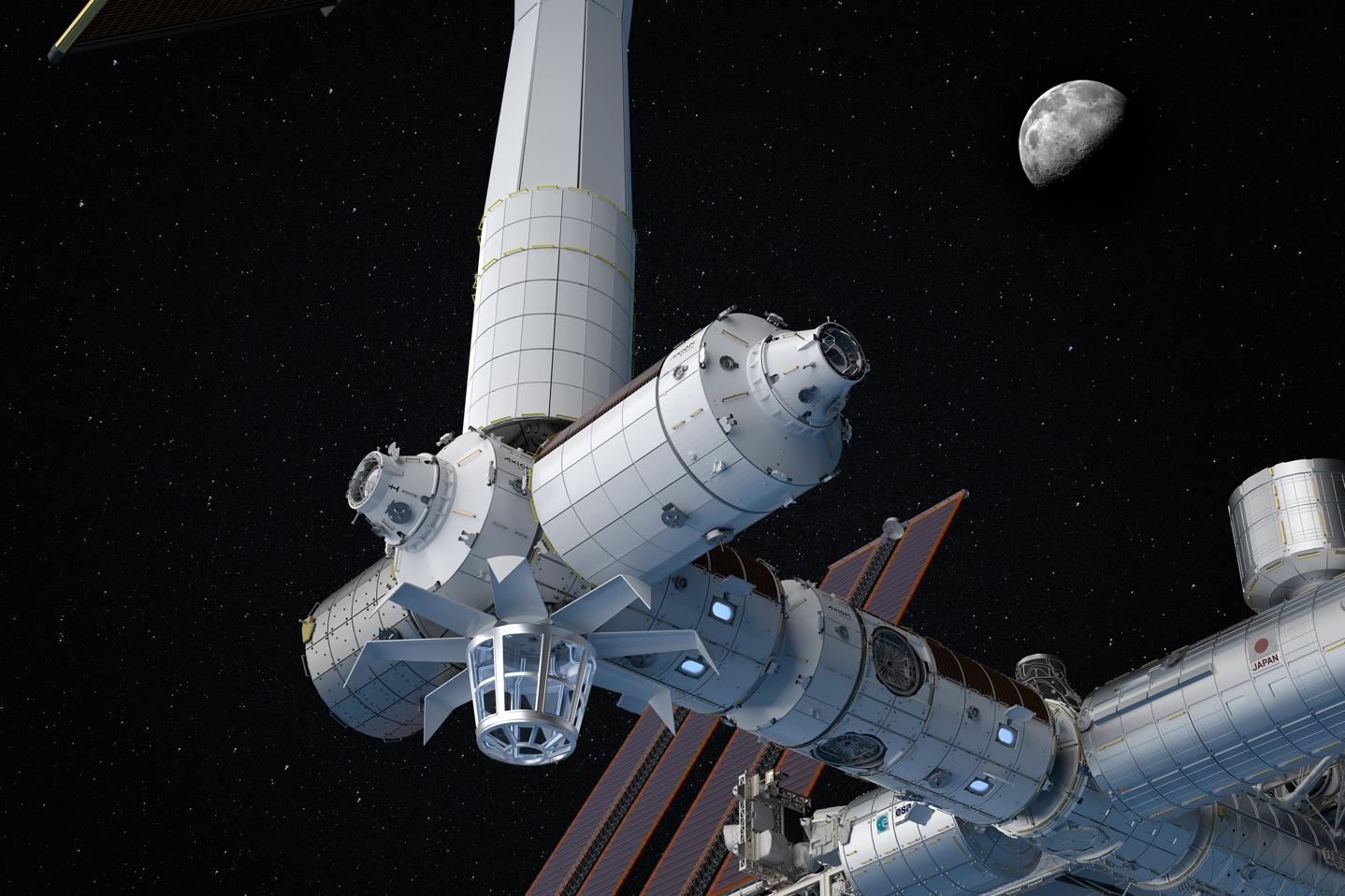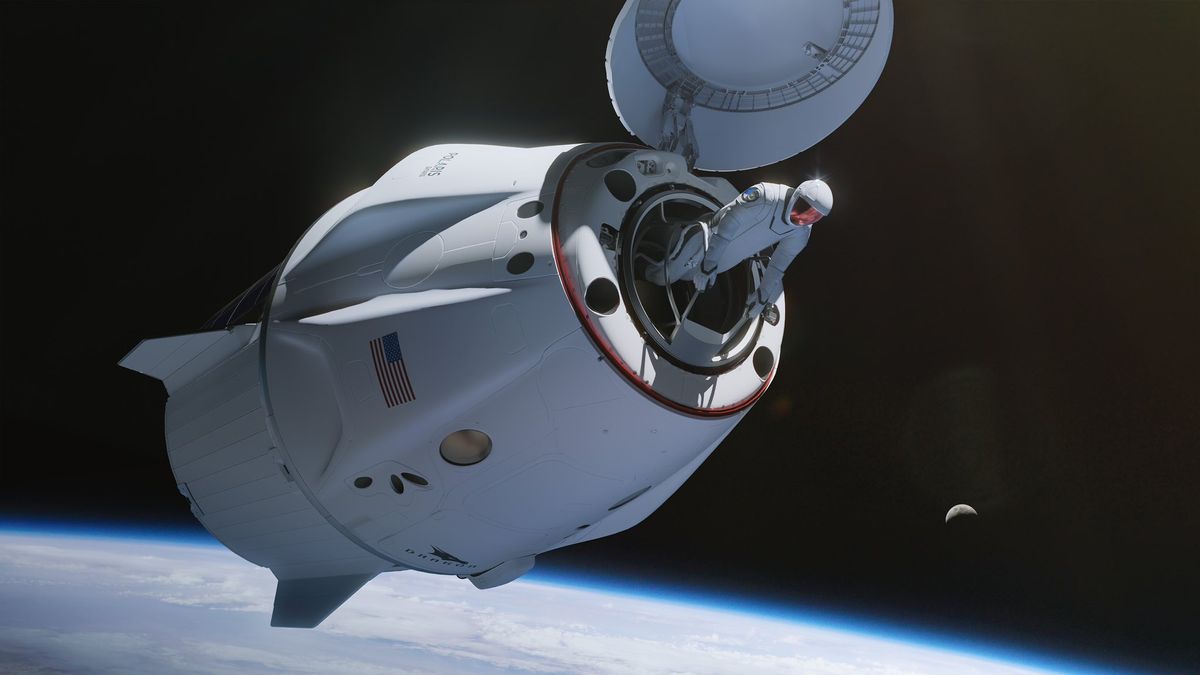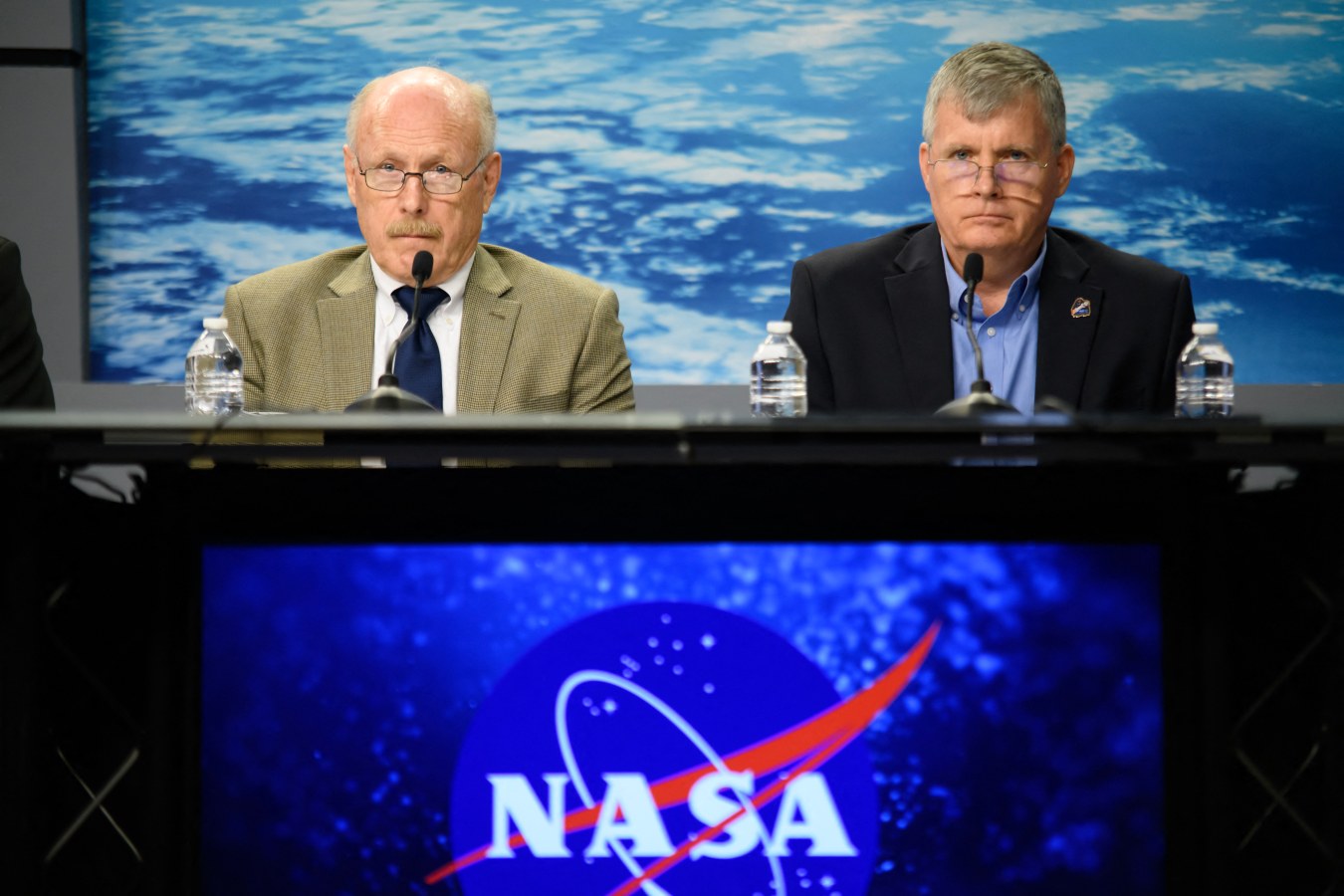With SpaceX and NASA as partners, Axiom pioneered commercial space flight to the International Space Station. Its next act was to be a commercial space station of its own. But missteps, dire financials and delays have sent it spiralling out of trajectory.

Axiom Space, a startup cofounded by billionaire Kam Ghaffarian, has a lofty goal: to build private space stations that allow humans to live and work off-planet en masse.
But lately the Houston-based company has been grappling with a more earthly concern — a struggle for survival. According to internal documents, seven former employees who spoke on the condition of anonymity due to nondisclosure agreements, and space industry experts, a severe cash crunch, business challenges and a cold reception to its latest fundraising efforts have hamstrung Axiom and led to extensive layoffs and pay cuts.

An artist’s rendition of the space station Axiom plans to build attached to the International Space Station.
Axiom Space
Axiom had intended to build an orbiting outpost using the International Space Station as a base. The plan was to build modularly, connecting sections of “Axiom Station” to the ISS, finishing work on them in space and finally detaching the completed station to fly free. It would make money by hosting tourists and companies looking to use microgravity conditions for things like drug development and semiconductor manufacturing. But Forbes has learned that plan has been upended by Axiom’s slow progress on the first module and the prospect that the ISS may have to be deorbited two years earlier than planned.
Now, a year after raising $350 million in a round led by Saudi Arabia’s Aljazira Capital and South Korean pharma company Boryung at a valuation of $2 billion, giving it a total of $500 million in funding, the startup is struggling to convince investors to give it more money to fund a smaller, less commercially lucrative station, former employees told Forbes.
“Turns out that there’s not a lot of billionaires that want to set aside their life for 18 months to go train to be an astronaut for the ISS.”
The lack of fresh capital has exacerbated long-standing financial challenges that have grown alongside Axiom’s payroll, which earlier this year was nearly 1,000 employees. Sources familiar with the company’s operations told Forbes that cofounder and CEO Michael Suffredini, who spent 30 years at NASA, ran Axiom like a big government program instead of the resource-constrained startup it really was. His mandate to staff up to 800 workers by the end of 2022 led to mass hiring so detached from product development needs that new engineers often found themselves with nothing to do, these people said.
In an interview discussing a range of issues raised by Forbes’ reporting, Ghaffarian conceded that Axiom was facing challenges, including a tough fundraising environment, that required a “right sizing” of staff. But he said he expects to close on fresh funding by the end of the year, and that the future is bright. “All my [space companies] where we are doing things that have never been done before, it is not a straight line.”
When Axiom was founded in 2016, it promised investors the first station module would be aloft in 2020. With that target receding, Axiom looked to expand into two new lines of business to bring in badly needed revenue while the station was under development. In 2020 it began lining up passenger trips to the ISS on SpaceX rockets. The company pitched these private missions as a way to develop the capability to bring business one day to its own orbital outpost. And in 2022 it won $228 million in NASA funding to design space suits for the Artemis III moon mission.
But the suits program sucked engineers and resources away from the station effort, and the passenger service to the ISS proved to be a money-hemorrhaging distraction, former employees said. “Turns out that there’s not a lot of billionaires that want to set aside their life for 18 months to go train to be an astronaut for the ISS,” a former Axiom executive told Forbes.

Shown here is the white cover layer of the Axiom Extravehicular Mobility Unit spacesuit prototype. Engineers from the Italian fashion house Prada, which has invested $25 million in Axiom, are helping develop materials and design features to protect against the unique challenges of space and the lunar surface.
Axiom Space
Axiom found itself struggling to make payroll, which hit $10 million a month in early 2023 per an internal document, and it fell behind on payments to suppliers, former employees said. Those include Thales Alenia Space, which is building the structure of Axiom’s first space station module, and SpaceX, which the company paid hundreds of millions of dollars for four passenger rocket launches to the ISS. SpaceX sent the company notices of breach of contract to pressure it to pay up in 2022 and 2023, they said.
“The fundraise rounds were never enough to keep us ahead of the curve and the revenue certainly wasn’t closing the gap,” the former executive told Forbes. “With every round, as soon as it came in, you pay SpaceX, you pay Thales Alenia, you pay your bills and then it’s gone.”
Ghaffarian said that Axiom had worked out new payment timelines with SpaceX and other suppliers. Thales Alenia spokesperson Catherine des Arcis said, “we have a very strong and trusting relationship with Axiom Space.” SpaceX declined to comment.
To cover shortfalls, Ghaffarian pumped tens of millions of dollars into the company, he confirmed to Forbes. John Shoffner, a wealthy businessman who bought a seat on Axiom’s second private mission to the ISS, loaned the company $10 million, documents shared with Forbes show. His loan came before his flight in 2023, former employees said. (“I’m proud to be both an astronaut and investor at Axiom Space,” Shoffner said in an email to Forbes.)
But it hasn’t been enough, and Axiom has been quietly reducing headcount. Ghaffarian said “about 100” had been laid off this year in two rounds, the latest on Sept. 4. Employees have been asked to take voluntary pay cuts of up to 20% over the next 12 months in return for stock in the company. Meanwhile, Axiom has seen a parade of high-profile departures. Ghaffarian stepped in to run the company temporarily after the abrupt exit last month of Suffredini, who had previously been NASA’s ISS manager (he did not respond to a comment request). Axiom lost its chief financial officer, chief safety officer and the heads of procurement and marketing earlier in the summer, and its chief operating officer at the end of 2023.
The high valuation awarded Axiom by investors now seems a curse, according to a space industry executive familiar with Axiom. “They reached a wall where they are unable to raise capital,” he said. “Kam had no choice but to come in and try and pick up the pieces.”
But rather than pulling back on any areas of the business, Ghaffarian insisted “our plan is to increase the scope.”
Axiom, in Ghaffarian’s telling, is going to help build a thriving economy in low-Earth orbit where its space station will be a precursor to “a space city” with hourly shuttle service. Skeptical investors will come around to what optimists like him are creating.
“People say, ‘I believe it when I see it,’ ” Ghaffarian said. “I believe it, then I will see it.”
ROCKETS’ RED INK
Forbes estimates Ghaffarian is worth $1.7 billion, thanks to a string of tech and space companies he’s founded, including a government services company he sold to KBR for $355 million; publicly traded Intuitive Machines (market cap: $770 million), which is making lunar landers; Quantum Space, which raised a $15 million Series A in 2022 to build a refueling network for spacecraft; and Axiom, in which Ghaffarian owns a 42% stake.
He and Suffredini founded the company on the belief that advances in technology and cheaper launch costs would enable building a private space station for a fraction of the price of the $150 billion ISS. They aimed to make an ISS replacement for just $3 billion, partly by using the old station as a foundation. In 2019, NASA gave Axiom a $140 million contract to build and operate a habitable module on the ISS that would serve as the first part of its station. Axiom could draw power and life support from the ISS while it constructed the rest, allowing it to start hosting tourists and customers before the station was complete.

Members of Axiom Mission 2 and ISS astronauts pose for a portrait during dinner time aboard the space station in May 2023.
Axiom Space
With fundraising slowing, the primary way Axiom planned to bankroll the station was the private space flights to the ISS — a pitch deck from 2023 reviewed by Forbes predicted that they would provide half of the $3 billion needed.
But while the three flights so far have generated plenty of media attention, the company lost money on all of them, former employees said. Bills from SpaceX have been steep: According to internal company documents reviewed by Forbes, Axiom is on the hook to pay about $670 million for four Dragon 2 launches. The documents show that Axiom expected to lose roughly $30 million on the first flight in April 2022 and that the losses would narrow from there.
But former employees said the losses have actually been tens of millions of dollars more, because the company failed to account for the costs of the roughly 60 personnel hired to run the missions. Then, after the first flight, NASA stipulated that one of the Dragon 2’s four seats be occupied by an experienced NASA mission commander – at the company’s expense. That left Axiom, which had already told customers the price of a seat was between $50 million and $55 million, in a tough spot; it was now impossible to break even. “We weren’t even close,” the former executive said.
Chief Revenue Officer Tejpaul Bhatia was single-mindedly focused on selling seats and collecting payment, but it was an endless struggle for Axiom to cover its bills, ex-employees said.

The Axiom Mission 2 crew — Saudi Arabia’s Rayyanah Barnawi (left) and Ali Alqarni (right), U.S. businessman John Shoffner (second from left) and former NASA astronaut Peggy Whitson — smile while sitting inside the Dragon capsule during a dress rehearsal.
SpaceX
“We were being told in our revenue meetings, literally we’ve got a month runway, we’re not going to hit payroll,” said one who worked on the private astronaut mission team. “You need to be doing everything you can to bring this money in because otherwise we’re all out of work.”
Bhatia told his staff to call customers daily after they’d been invoiced to get them to pay up earlier than the 30 to 60 days their contracts allowed, leading to unpleasant conversations, former employees said. “It was like, ‘Why do you keep calling us? We’ve told you what’s going on. Stop harassing us for the money,’” said the private astronaut team member.
Bhatia said he had nothing to add to the company’s other communications with Forbes.
In the end, only four of the six available seats on the first two flights went to wealthy space tourists, at an average price of $48 million apiece, according to the pitch deck. For the third this past winter, Axiom managed to sell slots to countries without space launch programs, averaging a little over $50 million a seat, internal documents show. But they weren’t easy sales. “As soon as price came into the conversation, things would often go radio silent,” said the former private astronaut mission employee.
Ghaffarian claimed the losses on the first three missions were “part of the plan from the beginning” because they were the “cost of acquisition” to build relationships with global space agencies that will yield future profitable sales.
Axiom’s fourth mission, scheduled for spring 2025, “is going to be neutral or cash-flow positive,” he said.
ISS’ END PRESSURES AXIOM
Amid the short-term focus on filling the astronaut missions, the company neglected developing partnerships and clients for manufacturing and research on the space station, the former employees said, which would have helped to sell investors on the business. And it is now years behind schedule on building the space station in the first place.
Part of the problem is that Axiom has been forced to radically change the design because of its slow progress and the possibility that the ISS could be decommissioned sooner than anticipated, four former employees told Forbes. Axiom planned on attaching two modules to the ISS in 2024 and 2025 — each with work spaces and quarters for four crew — and adding a research and manufacturing module in 2026. Then it would connect a power and thermal module in 2027, leaving the completed station ready to detach by 2028.

Engineers work on a section of Axiom Station’s Hab One module at Thales Alenia Space.
Axiom Space
But the first module hasn’t been finished, and Axiom is now saying it will launch the module to the ISS in late 2026. The delay means missed revenue that Axiom would have received from the NASA contract had it hit its original milestones.
The ISS is scheduled to be decommissioned in 2030 and then pushed into the Earth’s atmosphere to burn up, but Russia has said it won’t support the station past 2028, which could lead to the station being deorbited sooner. Former employees said Axiom has been scrambling for the past year to design a second module that could be rushed into orbit with sufficient power generation capabilities to create a viable free-flying station before then.
Ghaffarian said this was an option the company was “assessing very strongly” but had not yet “officially” committed to.
Assuming Axiom can pull it off, a smaller, lower-powered station would have dimmer commercial prospects, former employees said, complicating the company’s appeals for fresh capital.
“The business model had always counted on having significant power for microgravity research, semiconductor production and pharmaceutical production, plus supporting life in space,” one explained. “The business model had to change … and that has continued to make it challenging for the company to get around its cash flow issues.”
Ghaffarian said the company would be able to add more modules and power after its station detaches.
NASA did not respond to questions about possible concerns over Axiom’s financial condition. “NASA continues to work closely with Axiom Space during this phase of design and development,” agency spokesperson Anna Scheider wrote in an email. “NASA and Axiom Space continue to evaluate modifications to the Axiom Station assembly sequence.”
“We need to recognize the fact that the private sector is not going to jump in and save these [space station developers] with a whole bunch of cash.”
Chad Anderson, managing partner, Space Capital
Axiom appears to be doing better with its spacesuit program, sources told Forbes. Last year NASA gave Axiom additional funding to adapt its design for spacewalks – work that the company may have a larger lane to win after Collins Aerospace in June said it would stop developing its own spacewalk suit.
But SpaceX debuted its own spacesuit last week on the Polaris Dawn mission, and if it proves effective, it could undercut Axiom’s chances to win business beyond NASA.
NASA’S SPACE STATION BETS
NASA isn’t depending entirely on Axiom for an ISS replacement. It has bankrolled other companies developing free-flying outposts: billionaire Jeffrey Bezos’ Blue Origin is working with Sierra Space and Boeing on a project dubbed Orbital Reef, and the startup Voyager Space is leading a multinational coalition developing a station called Starlab.
But building a private space station is a daunting task. The Orbital Reef consortium may already be foundering, with Blue Origin and its main partner Sierra Space prioritizing other projects, as reported by CNBC. Voyager, by contrast, has engaged international partners to do the bulk of development work in return for equity, with Airbus building the stainless steel structure.
Then there’s Vast, founded by cryptocurrency billionaire Jed McCaleb. It plans to launch a small space station in late 2025, which would make it the first to orbit a commercial outpost. The company is also bidding to replace Axiom as the broker for commercial space flights to the ISS.
NASA is also eyeing a potential dark-horse disruptor: the mammoth Starship rocket that SpaceX is developing. It’s large enough to function as a space station in orbit, but one that can launch and land itself – a cheaper, two-for-one combination.
Help for Axiom could come from Washington. NASA is planning to launch a competition for the next round of funding for an ISS replacement in 2025, with awards to a smaller number of competitors in 2026. Ghaffarian is pushing to speed up the decision to next year — and for NASA to pick a single winner. “Today there’s not enough market for more than one,” he said.
Congress is going to have to step up if it wants a new space station, said Chad Anderson, managing partner of the investment firm Space Capital, which passed on investing in Axiom. He thinks all of the private-sector aspirants are facing the same underlying problems: Space stations are expensive to build and the business case for uses like manufacturing are still unproven. That means they’re going to remain more like national labs dependent on government contracts — which is not enticing for investors.
“We need to recognize the fact that the private sector is not going to jump in and save these companies with a whole bunch of cash,” he said. “If it’s driven by national interest, then the national interest needs to step up and fund it.”
If Ghaffarian isn’t able to secure the funding for Axiom to continue competing, he may have to further downsize the business to make it financially viable. But one former executive is skeptical that Ghaffarian’s takeover makes a difference. “Kam has always been the chairman and Suffredini is still on the board. So what change has actually happened?”
This article was first published on forbes.com and all figures are in USD.


